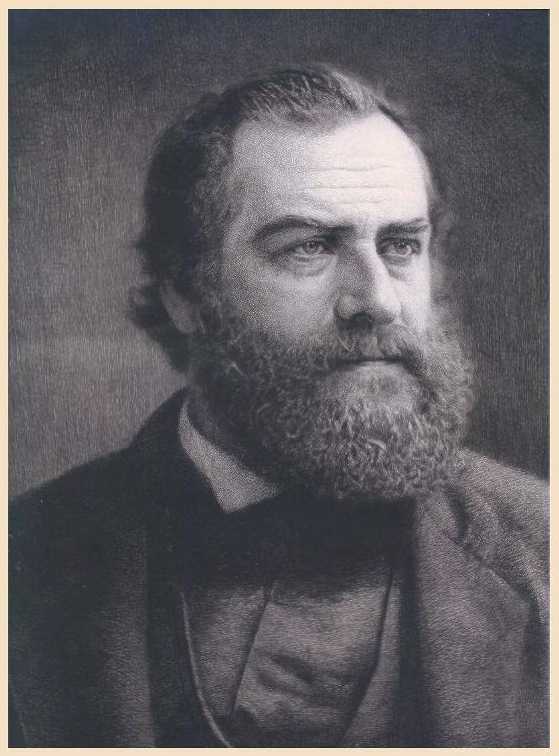
Leidy, J., 1870.
On Discosaurus and its allies.
Amer. Jour. Sci., ser. 2, 50(148):139-140.
 |
Leidy, J., 1870. On Discosaurus and its allies. Amer. Jour. Sci., ser. 2, 50(148):139-140.
Copyright © 2002-2009 by Mike EverhartPage created 01/12/2002; updated 07/11/2009 |
Wherein Dr. Leidy discusses the phylogeny of American plesiosaurs and mentions another mistaken identification of vertebrae by Cope. This article is a the American Journal of Science's version of a much longer and more detailed paper published in the Proceedings of the Academy of Sciences of Philadelphia: Leidy, J., 1870. Discosaurus and its allies. Proc. Acad. Nat. Sci. Phil. 22:18-22. (April 5, 1870).
|
Zoology
139 2. On Discosaurus and its allies; by Dr. J. Leidy (Proc. Acad. Nat. Sci Philad., 1870, p. 18). - On the 5th of April, Dr. Leidy made remarks on Discosaurus and its allies, additional to those published at p. 392 of the last volume of this Journal; and in the course of it discusses the relations of Cimoliasaurus, as originally established, to Discosaurus. On this point he observes: "In the first place, by comparison with the skeleton of the Kansas saurian we observe that the position in the column assigned to the vertebral bodies of Cimoliasaurus was incorrect, and this probably contributed to mislead Prof. Cope in his examination of the skeleton of the Kansas saurian. "The vertebral specimens referred to Cimoliasaurus consisted of two sets of specimens, from two different individuals, both from the greensand of Burlington Co., N. J. They are described in Cretaceous Reptiles, page 25, and characteristic ones presented in plates v and vi. "The eleven vertebrę considered as lumbar, and represented by figs. 17-19, pl. v, and 16-18, pl. vi, are evidently cervicals. Those considered as dorsals on page 26, and represented in figs. 13-16, pl. v, are at least in part posterior cervicals. Of the fourteen vertebrę referred to on page 27 as dorsals and lumbars, those described and represented in figs. 1-5, pl. vi, are alone dorsals, while the others described and represented in fig 6-9 are posterior, and those of figs. 10-18 more anterior cervicals. "The cervicals of Cimoliasaurus are so different in their proportions from those of the Kansas saurian that there can be no question as to the distinction of the two animals, at least as species. "Do all the remains originally referred to Discosaurus belong to this genus as distinct from Cimoliasaurus? I suspect that those from New Jersey belong to the latter. The animals indicated by all the fossils which have been under consideration are Plesiosauroid, and, as in recognized species of Plesiosaurus, there is much variability in the number, proportions, and other characters of the cervicals without a corresponding extent of variation in other parts of the vertebral column, we would be prepared to find in Cimoliasaurus nearly the same kind of caudals as in Discosaurus. "Prof. Cope, in his 'Synopsis of the Extinct Batrachia and Reptilia, pt. i, 1869, p. 56, describes two vertebral specimens from the lower bed of the Cretaceous green sand of Gloucester and Monmouth counties, which he attributes to a species with the name of Elasmosaurs orientalis. The specimens described as caudals are seen, by comparison with Kansas skeleton to be cervicals." The species referred to in this paper - all Cretaceous -- are finally as follows: 1. Discosaurus vetustus Leidy (Cimoliasaurus magnus) and C. vetustus, of Cope), from Alabama. 2. Disc. grandis 140 Scientific Intelligence. (Brimosaurus grandis Leidy, Cim. grandis Cope), from Arkansas. 3. Disc. carinatus (Elasm. platyurus, and Disc. carinatus of Cope) from Kansas. 4. Disc. magnus (Cim. magnus Leidy, Disc. vetustus in part? Leidy), from New Jersey. 5. Disc. planior (Disc. vetustus in part, Leidy), from Mississippi. 6. Disc. orientalis (Elasm. orientalis Cope) from New Jersey.
|